Musical trends in 1914 New Orleans reflected revolutionary changes underway in American popular entertainment. The French Opera House, a monument to the city’s rich classical-music history, still stood at the corner of Bourbon and Toulouse Streets. But in local nightclubs, young jazz artists such as Joe “King” Oliver, Kid Ory, and Nick LaRocca were propagating a new, thoroughly American style of music.
Meanwhile, in theaters across the country, audiences continued to flock to another entertainment staple: the vaudeville show. Traveling troupes of performers—musicians and magicians, acrobats and trained animals—had been enthralling Americans for several decades. It was in this environment of old, new, and popular music that the sound of the Boswell Sisters was born.
In 1914, former vaudevillian Alfred Clyde “A. C.” Boswell brought his family to New Orleans. Trading show business for mainstream respectability, A. C. took a well-paying job at the local offices of the Fleischmann Company, makers of Fleischmann’s Yeast, and moved his wife, Meldania, and four children—Clyde Jr., or “Clydie”; Martha; Constance, or “Connie”; and Helvetia, or “Vet”—into a comfortable neighborhood uptown. Guided by their parents’ exuberant love of music, the Boswell children would soon bring the family name back into the world of popular entertainment.
Music was a constant presence in the Boswells’ lives. All the children received formal training in classical music, primarily from noted professor Otto Finck. Martha studied piano; Vet and Clydie, violin; and Connie, cello. Meldania also made sure they were exposed to other forms of music, bringing the children to see the popular African American musicians of the day at the Lyric Theatre and inviting jazz artists such as Santo Pecora, Emmett Louis Hardy, Leon Roppolo, Pinky Vidacovich, and Tony Parenti to visit the Boswell home.
Clydie died in the influenza epidemic of 1918, but the Boswell girls carried on, eventually trading their classical studies for the rapidly growing world of jazz. Martha continued on piano, Vet switched to banjo, and Connie picked up saxophone and guitar. Rather than instrumental work, though, what would soon set them apart was their experimentation with jazz-based vocal harmonies. By the early 1920s they were local celebrities, performing vaudeville-style shows at the Saenger, Palace, and Orpheum theaters and appearing on local radio programs.
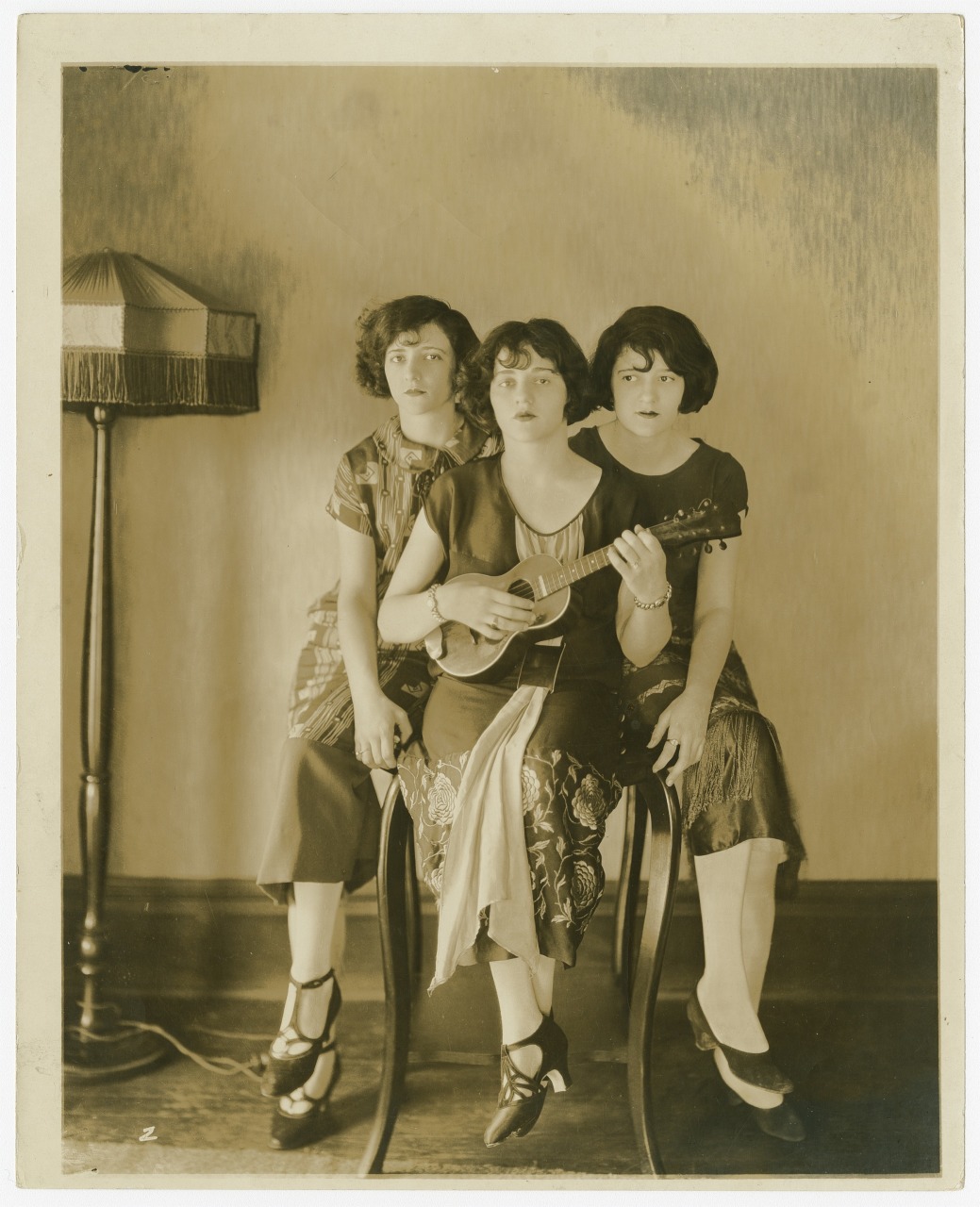
Boswell Sisters portrait
1925; photoprint
by Charles L. Franck, photographer
The Historic New Orleans Collection, gift of the Boswell Museum of Music, 2011.0315.95
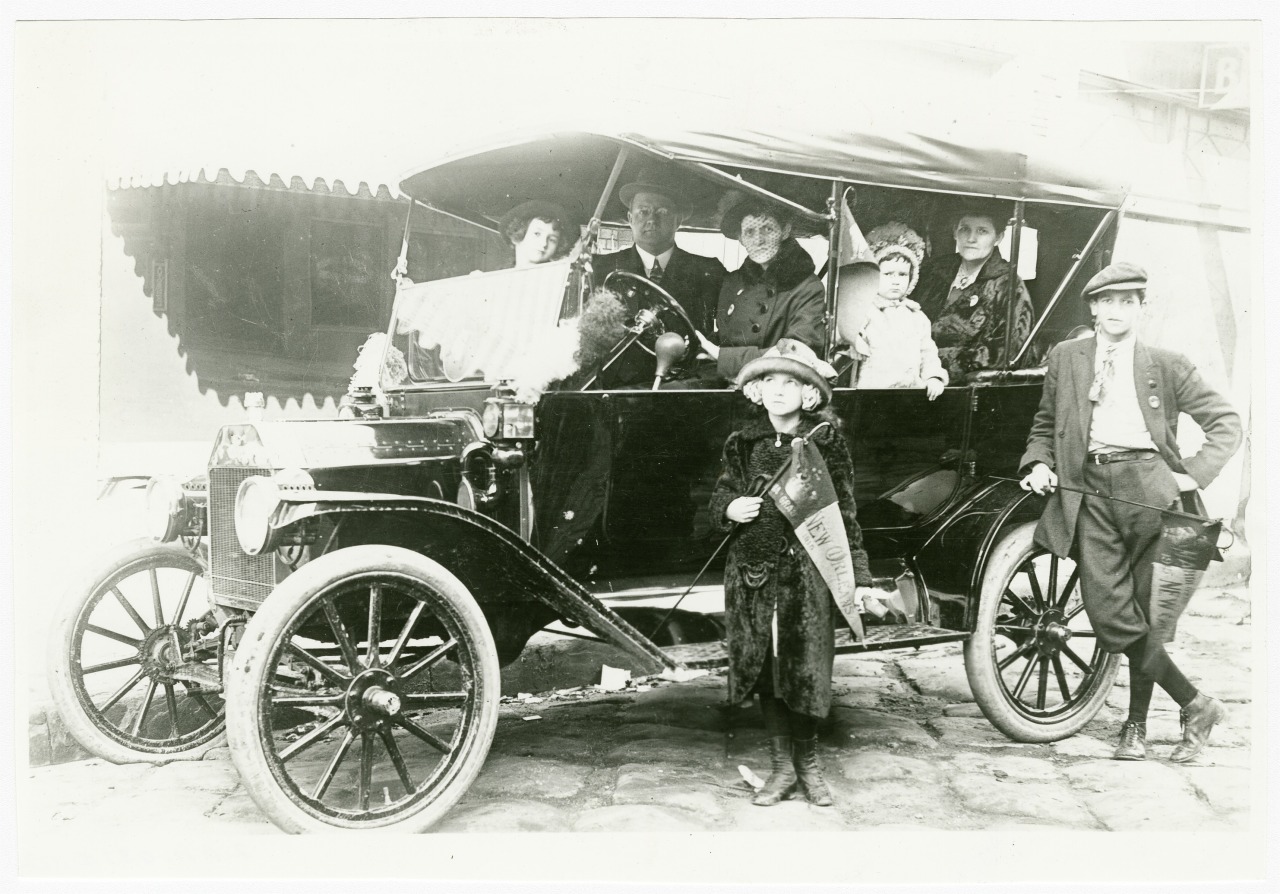
Boswell family in and around automobile on Mardi Gras Day
1914; photoprint
The Historic New Orleans Collection, gift of the Boswell Museum of Music, 2011.0315.122
The Boswell family—Meldania and Alfred Clyde, sisters Martha, Vet, and Connie, brother Clydie, and aunt Martha—gathers on Mardi Gras Day 1914.
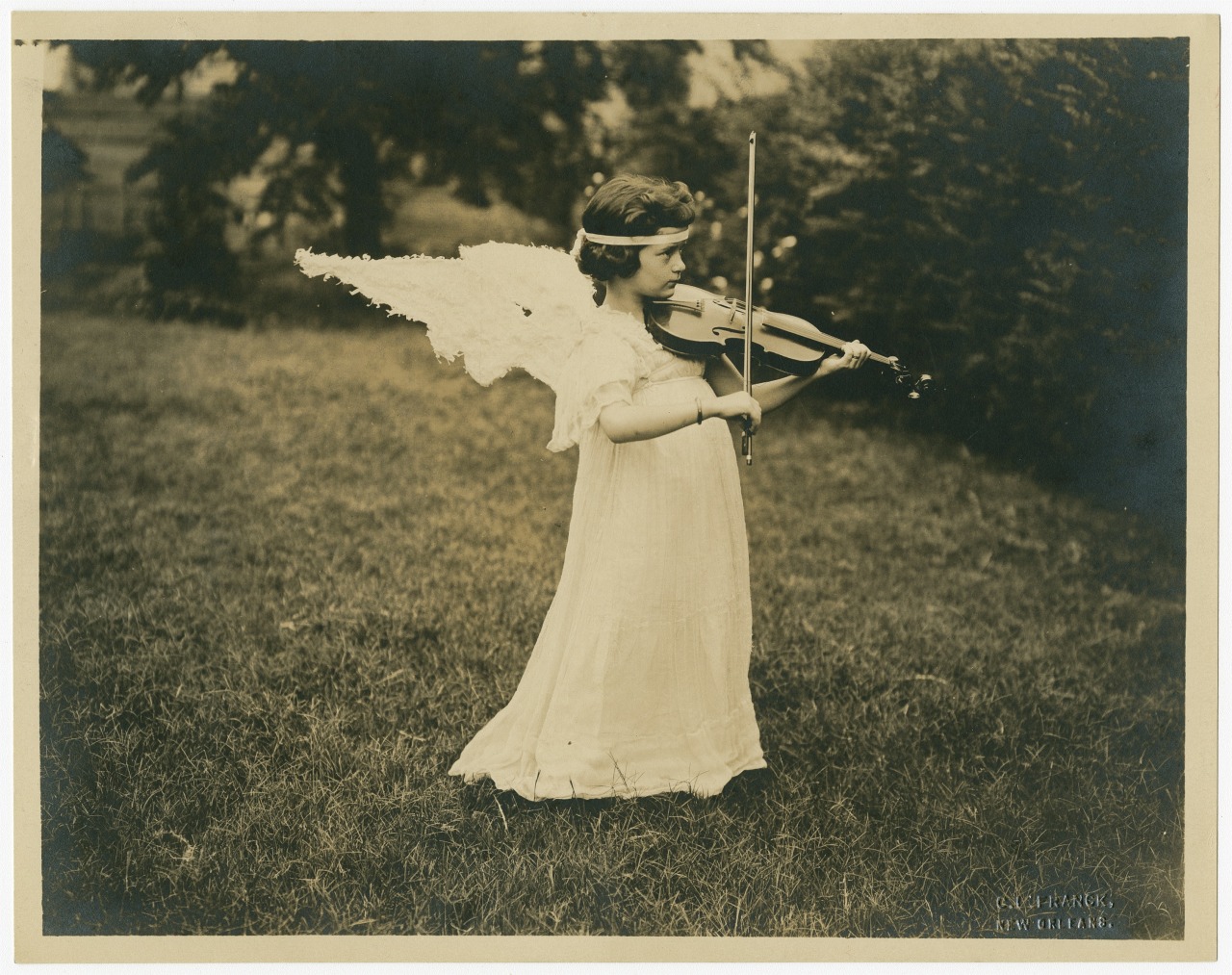
Vet Boswell in passion-play costume
1919; photoprint
by Charles L. Franck, photographer
The Historic New Orleans Collection, gift of the Boswell Museum of Music, 2011.0315.124
In the spring of 1919 the French Opera House hosted a series of performances of Veronica’s Veil, commonly billed as America’s Passion Play. Many of these dramatic productions of the Passion of the Christ were produced by the Reverend Avila A. Ethier of Our Lady of Good Counsel church, for the benefit of the American Red Cross. Vet and Connie Boswell were cast as angels, making them some of the last players to take the French Opera House stage before the structure was destroyed in a fire in December 1919.
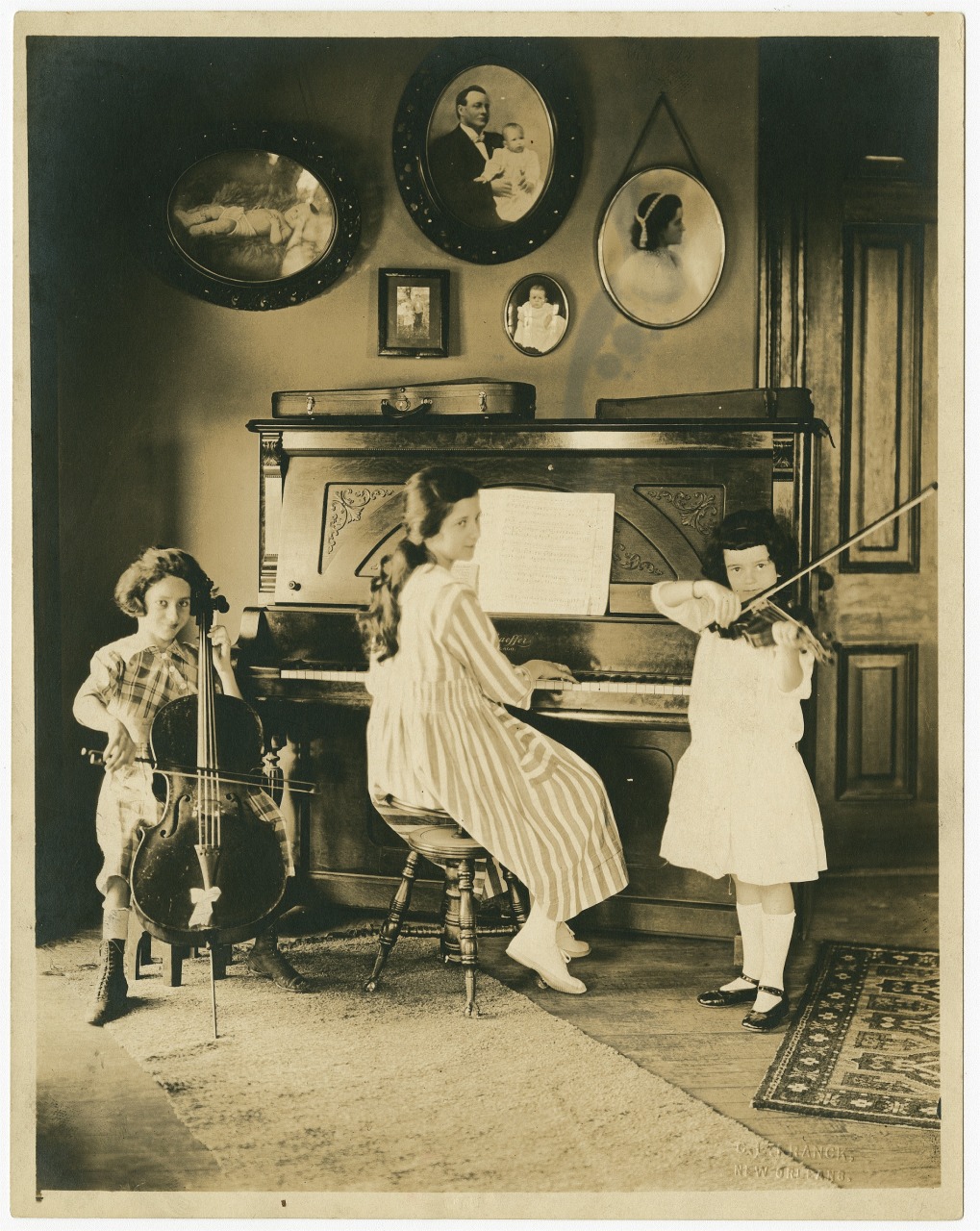
Young Boswell sisters performing at home
1918; photoprint
by Charles L. Franck, photographer
The Historic New Orleans Collection, gift of the Boswell Museum of Music, 2011.0315.93
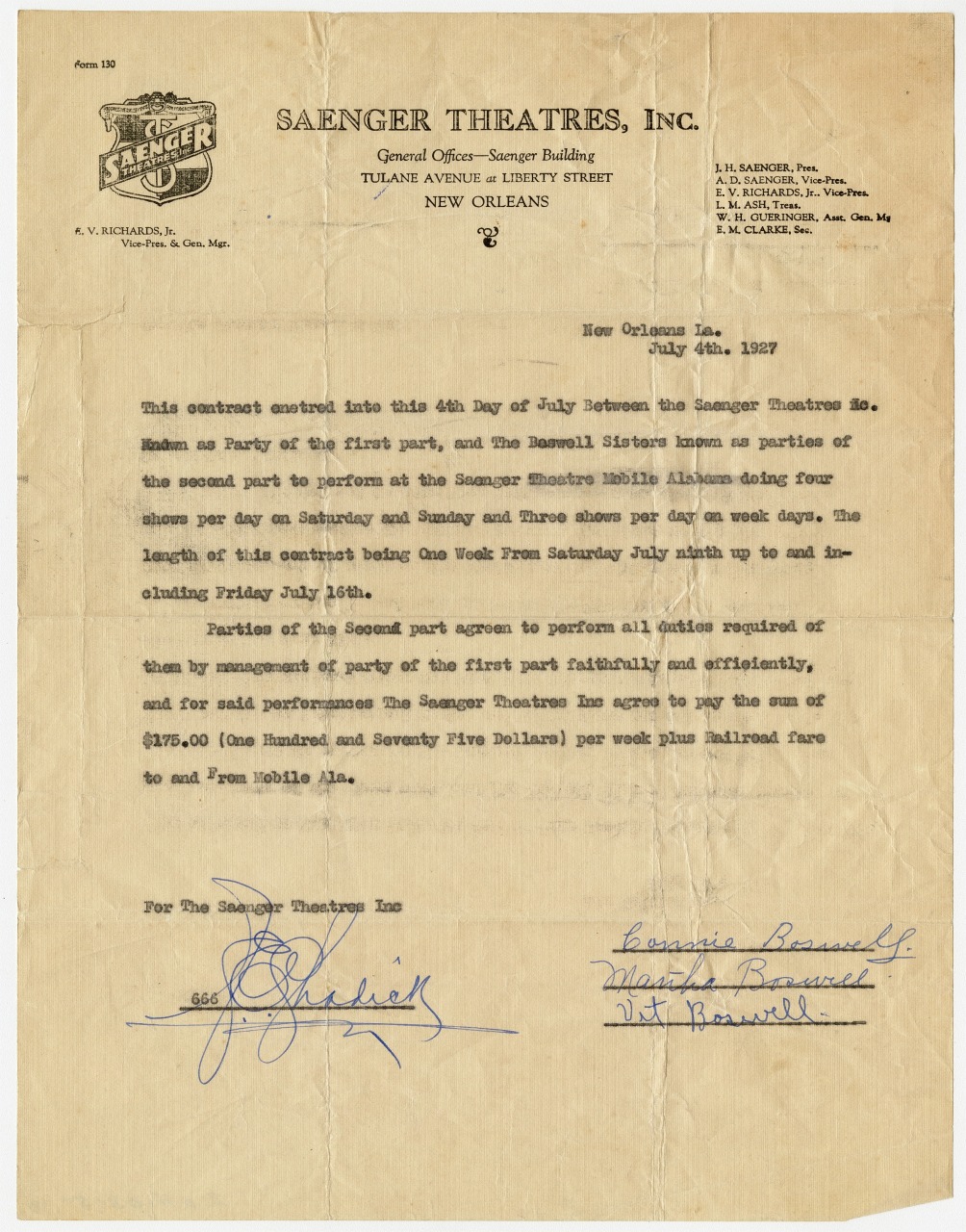
Contract with Saenger Theatres Inc.
1927; document, typescript
The Historic New Orleans Collection, gift of the Boswell Museum of Music, 2011.0315.38
With years of public performances and radio appearances, as well as their first recording, under their belts, the Boswell Sisters were seasoned musicians by July 1927, when they were offered the opportunity to perform at the Saenger Theatre in Mobile, Alabama. The theater had opened just seven months earlier, by New Orleans founders J. H. and A. D. Saenger.
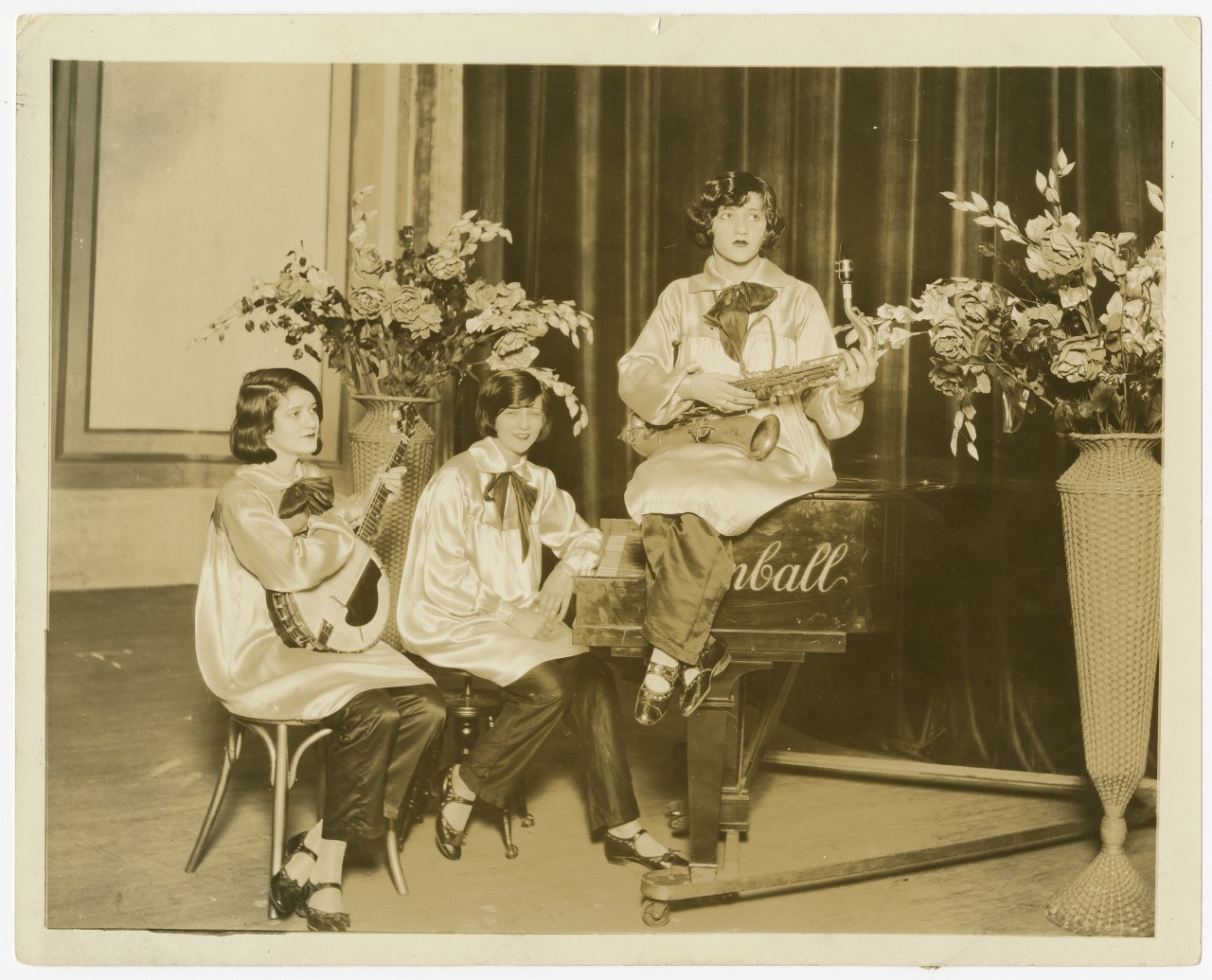
Boswell Sisters onstage at the Orpheum Theatre
1925; photoprint
by Charles L. Franck, photographer
The Historic New Orleans Collection, gift of the Boswell Museum of Music, 2011.0315.94
While still studying at the Francis T. Nicholls Industrial School For Girls on Laurel Street, the Boswell Sisters fulfilled several professional engagements at the Orpheum Theatre. For one such performance, on August 30, 1925, the sisters were billed as the New Orleans Princesses of Melody.
